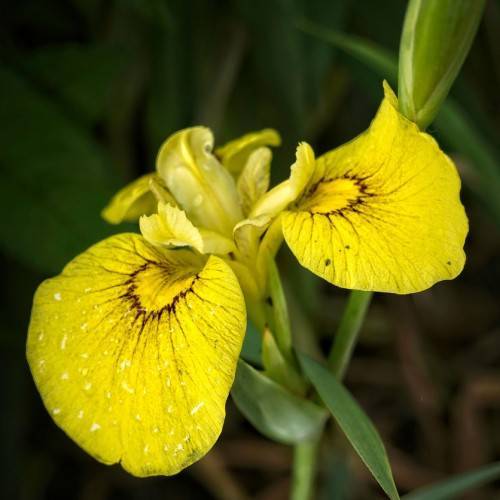
yellow flag
Iris pseudacorus
Cycle:
Herbaceous Perennial
Watering:
Frequent
Hardiness Zone:
5 - 9
Flowers:
Flowers
Sun:
Full sun,part shade
Soil:
Humus rich
Fruits:
Fruits In Summer Ready In
Edible:
Yes
Leaf:
Yes
Growth Rate:
High
Maintenance:
Low
Drought Tolerant:
Yes
Salt Tolerant:
Yes
Thorny:
Yes
Invasive:
Yes
Care Level:
Medium
watering
Yellow flag (Iris pseudacorus) should be watered regularly throughout its growing season, which runs from Spring through Summer. During this period, give the plant 1 inch of water twice per week, or enough to keep the soil evenly moist but not soggy. Make sure to avoid standing water in the container or at the base of the plant. During cooler, drier months, such as Fall and Winter, reduce watering frequency to only once every few weeks. It is always best to err on the side of underwatering these plants as overwatering can cause root rot.
sunlight
The yellow flag (Iris pseudacorus) prefers a lot of sunlight. During the peak growing season of early summer, it should receive around 8 hours of direct sunlight each day. If planted in a spot with a lot of shade, its growth will be stunted and its colors and blooms won't be as vibrant. However, when moving into fall and winter, the yellow flag should be given slightly less direct sunlight, around 6 to 5 hours per day.
pruning
The best time to prune yellow flag (Iris pseudacorus) plants depends on the gardener's pruning goals and climate, but generally, it is best to prune them in late winter or early spring. That said, the exact timing of pruning varies depending on local climate. For example, warmer areas may need to put pruning off until mid-spring, while cooler areas may have to prune in late winter. With regards to pruning amount, it is important to begin yellow flag pruning conservatively. Start by removing dead leaves, stems, and flower stalks. Once the plant has awaken in late winter/early spring, you may then begin to trim more aggressively to remove a third of the old, woody stems at ground level. Always make sure to leave a few new shoots intact so as not to damage the yellow flag. Other than that, the only other pruning that is necessary is regular deadheading of flowers to encourage more blooms.
